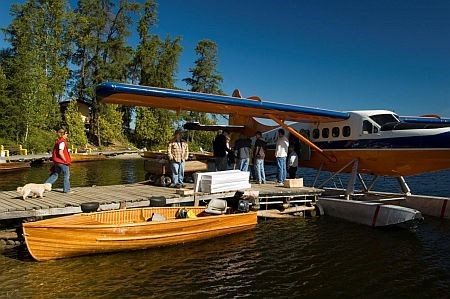The creation of a new series of tourism regions across the province is receiving a mixed reaction in the North as Ontario makes a shift from pure destination marketing to additional tourism development opportunities.
“There’s been no real co-ordinated effort to do things like training, product development and educational capacity building in the past in this province, let alone at the regional level,” says Rob Skelly, manager of tourism with the City of Greater Sudbury.
“That’s the exciting part, from my perspective and it should begin to really make a difference in the North.”
First announced in December, the move follows recommendations made in a February 2009 tourism competitiveness report by Vaughan MPP Greg Sorbara. It splits Ontario into a series of 13 tourism regions, 12 of which are southern Ontario.
Northern Ontario makes up one large region, having received the label of “Region 13,” with three subdivisions largely split along north-south lines.

This is the worst government ever, from a tourism perspective.”
Gerry Cariou,
executive director,
Sunset Country Travel Association
One includes Timmins, North Bay and Sudbury, along with Manitoulin Island; another includes Elliot Lake, Sault Ste. Marie and upwards through to Hearst; and the other includes the Thunder Bay, Rainy River and Kenora districts.
Rather than providing travel groups with direct access to funding, regional money will instead be flowed through new regional travel organizations, which will oversee each tourism region.
Although details are still being worked out, one central organization will oversee all three Northern subregions.
Some are hailing the move as beneficial, such as Dave MacLachlan, owner of the Sault Ste. Marie outfitter North to Adventure.
“We’re looking at keeping existing regions and brands, including city brands, and building on that,” says MacLachlan, who alongside Skelly co-chairs a working group to form the Northern regional tourism organization.
“It makes sense in this economy where instead of having three regions in the North doing the same thing, we can have one region getting into product and workforce training.”
Requests for expressions of interest in forming such organizations were to be submitted by March 1 in anticipation of having the various regional travel organizations fully up and running within two years.
After receiving the go-ahead from the province in early April, organizations will be able to form not-for-profit corporations and access $25 million in provincial transition funding, which is being made available to the various regional groups over the next two years.
This is on top of the $40 million in new annual funding the province will provide across all 13 regional organizations, derived mainly from additional revenues from the Harmonized Sales Tax.
Additional funding for the organizations may potentially be accessed through a new type of fee, known as a regional tourism fee. The province is putting the ability to levy this fee into the hands of these groups in exchange for having clamped down on destination marketing fees, which the province viewed as being inconsistent and not spent in a transparent way, says Skelly.
Although the exact makeup, governance and membership is still being determined, MacLachlan expects the Northern organizations will be run with equal representation from each subregion. The working group will host a two-day session in Sudbury in early May to work out further details via consensus.
“We’re happy to see this happen, since it’ll help bring a more cohesive voice to the North," says Paul Pepe, manager of tourism with the City of Thunder Bay. “There are a lot of questions to date, of course, but change is a good thing. The more linkages we have, the better off we are.”
Others, including one prominent voice in the northwest, are less pleased.
“This is the worst government ever, from a tourism perspective,” says Gerry Cariou, executive director of the Ontario’s Sunset Country Travel Association.
“This is just an attempt to seize control and it steamrolls the grassroots efforts that have been built up over decades.”
In particular, Cariou takes issue with the designation of a single region for all of Northern Ontario, something which he says “makes a bit of a mockery” of the area and stands as a sign of the provincial government’s disdain for the North.
Cariou argues the unique needs of the northwest should lead to a distinct regional tourism organization for that area. He says the clampdown on destination marketing fees as used by some cities such as Sault Ste. Marie takes power away from the local level and puts it in the hands of “provincial cronies.”
While he says he’s not necessarily against the provincial shift, Northern Ontario Tourist Outfitters Association (NOTO) executive director Doug Reynolds says he’s concerned about the larger questions being left unanswered by the process. Issues surrounding experiential tourism, the stimulation of new investments and new offerings and the relatively short turnaround time for the entire process are ongoing and pressing concerns, says Reynolds.
“It’s the wild, wild west out there right now.”




